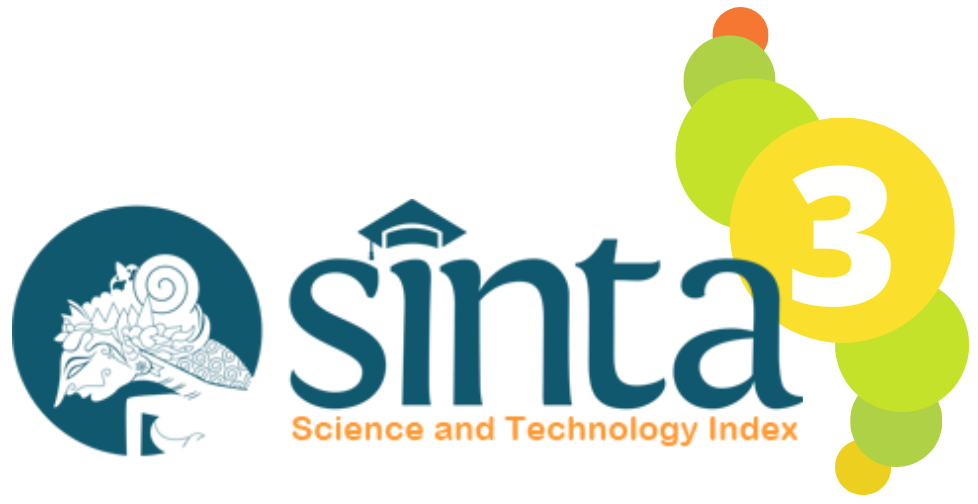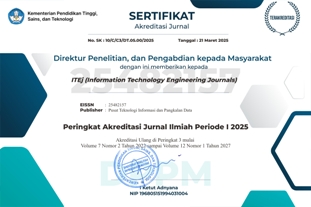Optimizing Loan Approval Processes with Support Vector Machines (SVM)
Abstract
Loan approval is a critical process in banking, requiring accurate assessment of borrower risk to minimize defaults while maintaining customer satisfaction. This study explores the optimization of loan approval processes using Support Vector Machines (SVM), a robust machine learning method known for its effectiveness in classification tasks. We utilized a dataset comprising historical loan applications, incorporating features such as credit score, income level, debt-to-income ratio, and employment history. The SVM model was trained and evaluated using cross-validation techniques to ensure generalizability. Our results demonstrate that SVM outperforms traditional statistical methods in predicting loan approval decisions, achieving higher accuracy and a significant reduction in false positives. Furthermore, feature importance analysis revealed that credit score and debt-to-income ratio are the most influential factors in the model's decision-making process. By integrating the optimized SVM model into existing banking workflows, institutions can streamline their approval processes, reduce operational costs, and improve customer experience. This study highlights the potential of SVM in modernizing decision-making frameworks in the banking sector, paving the way for further adoption of advanced machine learning techniques in financial services.
Downloads
References
C. Phan, S. Filomeni, and S. K. Kok, “The impact of technology on access to credit: A review of loan approval and terms in rural Vietnam and Thailand,” Res. Int. Bus. Financ., vol. 72, p. 102504, Oct. 2024, doi: https://doi.org/10.1016/j.ribaf.2024.102504.
J. Ingvarson, “Effects of standardization in risk management regulations for land-use planning related to process industries and transportation of dangerous goods,” J. Loss Prev. Process Ind., vol. 91, p. 105383, Oct. 2024, doi: https://doi.org/10.1016/j.jlp.2024.105383.
H. Fukuyama, R. Matousek, and N. G. Tzeremes, “A unified framework for nonperforming loan modeling in bank production: An application of data envelopment analysis,” Omega, vol. 126, p. 103063, Jul. 2024, doi: https://doi.org/10.1016/j.omega.2024.103063.
C. Winzer, H. Ramírez-Molina, L. Hirth, and I. Schlecht, “Profile contracts for electricity retail customers,” Energy Policy, vol. 195, p. 114358, Dec. 2024, doi: https://doi.org/10.1016/j.enpol.2024.114358.
M. Kour, “Revolutionizing Finance: Unleashing Machine Learning’s Potential for a New Financial Era,” in 2024 International Conference on Advances in Computing Research on Science Engineering and Technology (ACROSET), 2024, pp. 1–5, doi: https://doi.org/10.1109/ACROSET62108.2024.10743732.
M. Glatter, Jian Huang, S. Ahern, J. Daniel, and Aidong Lu, “Visualizing Temporal Patterns in Large Multivariate Data using Modified Globbing,” IEEE Trans. Vis. Comput. Graph., vol. 14, no. 6, pp. 1467–1474, Nov. 2008, doi: https://doi.org/10.1109/TVCG.2008.184.
Wei-Yun Yan and Qiang He, “Multi-class fuzzy support vector machine based on dismissing margin,” in 2009 International Conference on Machine Learning and Cybernetics, 2009, pp. 1139–1144, doi: https://doi.org/10.1109/ICMLC.2009.5212368.
L.-M. He, X.-B. Yang, and H.-J. Lu, “A Comparison of Support Vector Machines Ensemble for Classification,” in 2007 International Conference on Machine Learning and Cybernetics, 2007, pp. 3613–3617, doi: https://doi.org/10.1109/ICMLC.2007.4370773.
F. Faridi, A. Ebrahimpoor Gorji, and S. Riahi, “Prediction of Nernst coefficient of S-containing compounds between fuel and ionic liquid phases in the extractive desulfurization using linear and supported vector machine (SVM) methods: QSPR-based machine learning,” J. Taiwan Inst. Chem. Eng., vol. 165, p. 105773, Dec. 2024, doi: https://doi.org/10.1016/j.jtice.2024.105773.
A. Panthakkan, N. Valappil, M. Appathil, S. Verma, W. Mansoor, and H. Al-Ahmad, “Performance Comparison of Credit Card Fraud Detection System using Machine Learning,” in 2022 5th International Conference on Signal Processing and Information Security (ICSPIS), 2022, pp. 17–21, doi: https://doi.org/10.1109/ICSPIS57063.2022.10002517.
S. Singh, K. R. Ramkumar, and A. Kukkar, “Machine Learning Techniques and Implementation of Different ML Algorithms,” in 2021 2nd Global Conference for Advancement in Technology (GCAT), 2021, pp. 1–6, doi: https://doi.org/10.1109/GCAT52182.2021.9586806.
J. Ren, C. Zhu, Z. Huang, R. Chen, S. Xu, and P. You, “Advancing Ultra-Short-Term Wind Power Forecasting with Multi-Channel ML Techniques,” in 2024 6th International Conference on Energy Systems and Electrical Power (ICESEP), 2024, pp. 77–80, doi: https://doi.org/10.1109/ICESEP62218.2024.10652147.
D. Rai, J. Agrawal, D. Pandey, D. Pandey, and M. Jain, “Clinical Efficacy Of Ensemble Learning For Cardiovascular Disease Prediction: A Comparative Analysis With Traditional Machine Learning Classifiers,” in 2023 International Conference on Modeling, Simulation & Intelligent Computing (MoSICom), 2023, pp. 565–569, doi: https://doi.org/10.1109/MoSICom59118.2023.10458781.
A. E. Raj, V. B. Marin, C. Balakrishnan, K. Elangovan, R. Meenakshi, and M. Muthulekshmi, “Healthcare Management System to Improve Data Analytics Using Support Vector Machine Algorithm,” in 2024 4th International Conference on Innovative Practices in Technology and Management (ICIPTM), 2024, pp. 1–6, doi: https://doi.org/10.1109/ICIPTM59628.2024.10563339.
J. Wei, H. Chen, Y. Yuan, H. Huang, L. Wen, and W. Jiao, “Novel imbalanced multi-class fault diagnosis method using transfer learning and oversampling strategies-based multi-layer support vector machines (ML-SVMs),” Appl. Soft Comput., vol. 167, p. 112324, Dec. 2024, doi: https://doi.org/10.1016/j.asoc.2024.112324.
Y. Kocoglu et al., “Enhancing shale gas EUR predictions with TPE optimized SMOGN: A comparative study of machine learning algorithms in the marcellus shale with an imbalanced dataset,” Gas Sci. Eng., vol. 131, p. 205475, Nov. 2024, doi: https://doi.org/10.1016/j.jgsce.2024.205475.
Ran He, Bao-Gang Hu, Wei-Shi Zheng, and Xiang-Wei Kong, “Robust Principal Component Analysis Based on Maximum Correntropy Criterion,” IEEE Trans. Image Process., vol. 20, no. 6, pp. 1485–1494, Jun. 2011, doi: https://doi.org/10.1109/TIP.2010.2103949.
S. Sakib, M. A. Bakr Siddique, and M. A. Rahman, “Performance Evaluation of t-SNE and MDS Dimensionality Reduction Techniques with KNN, ENN and SVM Classifiers,” in 2020 IEEE Region 10 Symposium (TENSYMP), 2020, pp. 5–8, doi: https://doi.org/10.1109/TENSYMP50017.2020.9230983.
N. Uddin, M. K. Uddin Ahamed, M. A. Uddin, M. M. Islam, M. A. Talukder, and S. Aryal, “An ensemble machine learning based bank loan approval predictions system with a smart application,” Int. J. Cogn. Comput. Eng., vol. 4, pp. 327–339, Jun. 2023, doi: https://doi.org/10.1016/j.ijcce.2023.09.001.
A. Masurkar, R. Daruwala, and A. Mohite, “Performance analysis of SAR filtering techniques using SVM and Wishart Classifier,” Remote Sens. Appl. Soc. Environ., vol. 34, p. 101189, Apr. 2024, doi: https://doi.org/10.1016/j.rsase.2024.101189.
J. Lee, Y. Park, J. Lee, and M. Cho, “Non-intrusive reduced-order modeling for nonlinear structural systems via radial basis function-based stiffness evaluation procedure,” Comput. Struct., vol. 304, p. 107500, Nov. 2024, doi: https://doi.org/10.1016/j.compstruc.2024.107500.









